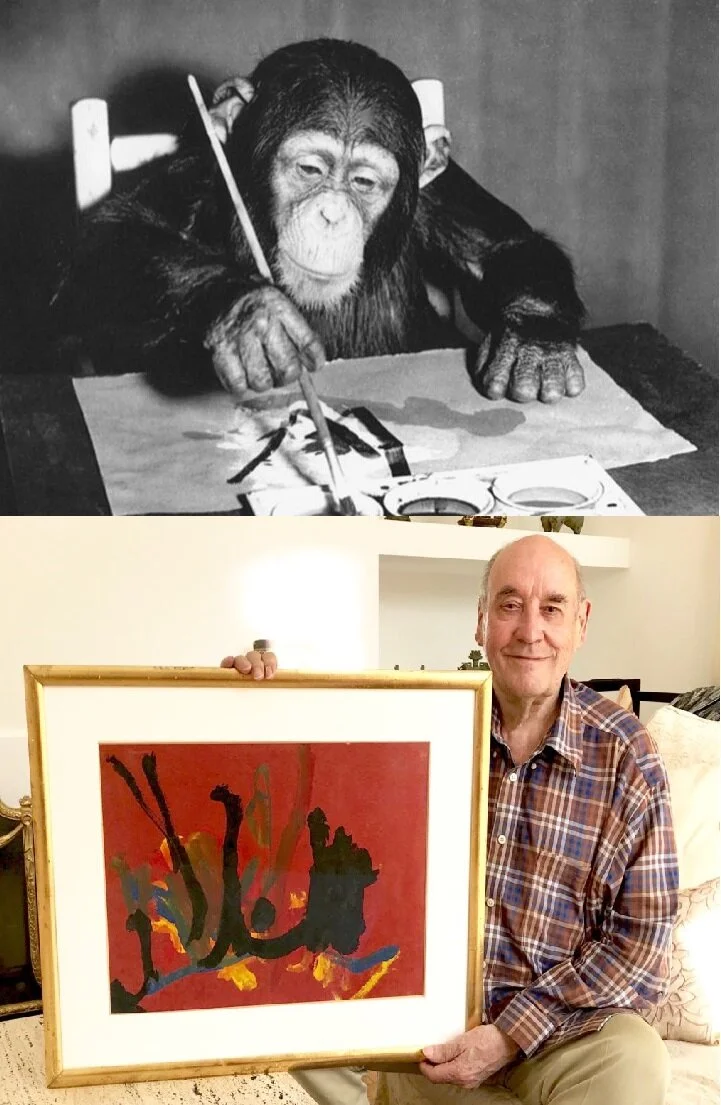Art by Congo, the Famous Painting Ape, to Go on Sale at London's Mayor Gallery
/Art by Congo, the Famous Painting Ape, to Go on Sale at London's Mayor Gallery
In December, a beloved 20th-century artist will finally get his due when a lot of 55 paintings by Congo the chimpanzee goes on exhibit at the Mayor Gallery in London.
The paintings are owned by Desmond Morris, who hosted “Zoo Time,” a U.K. show broadcast from the London Zoo in the 1950s.
Morris was no ordinary television host. He was a noted abstract painter, an ethologist (someone who studies animal behavior) and zoologist. He’s also the author of many popular science books, including 1967’s The Naked Ape, which examines humans through a zoologists lens.
As Nigel Reynolds at the Telegraph reports, one day Morris offered the young chimp Congo a pencil and the rest was history. “He took it [the pencil] and I placed a piece of card in front of him,” Morris recalls. “This is how I recorded it at the time, ‘Something strange was coming out of the end of the pencil. It was Congo’s first line. It wandered a short way and then stopped. Would it happen again? Yes, it did, and again and again.’”






